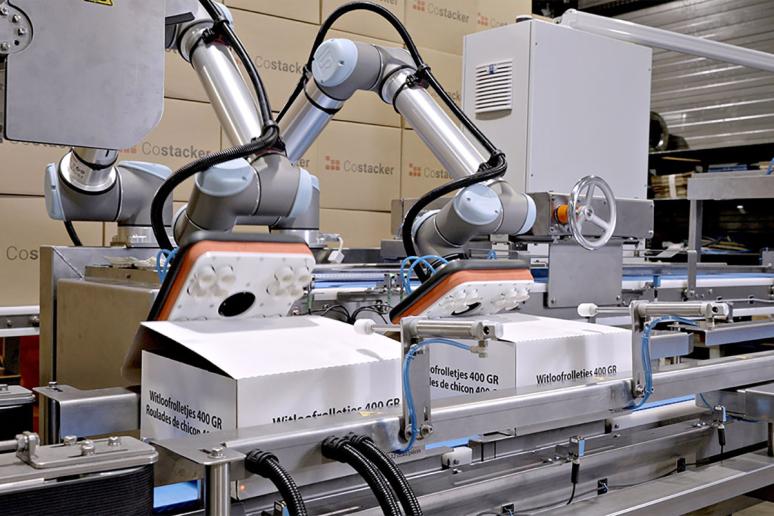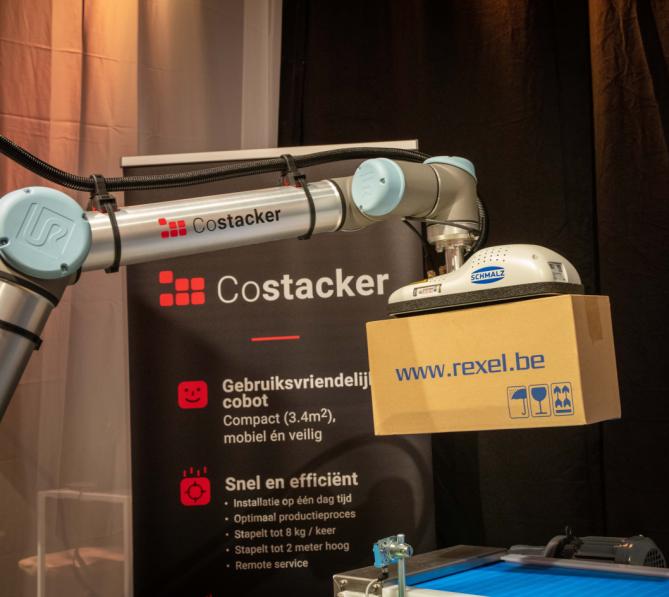Our experts speak out
Robotics

You're probably also wondering whether it's better to go for a stationary robot or a mobile cobot. That, too, depends on what you need. With a fixed robot, you can be sure of high speeds, precision and top technology. Are your production cycles and throughput times short? Then a fixed robot is a good choice. Just make sure you have the necessary space. A mobile cobot is a more user-friendly robot that is safe and therefore can work perfectly with workers. The programming is also simpler and the software more intuitive. Cobots work slower - especially when interacting with humans - but require less space.

A cobot is a collaborative robot. That is, this type of robot is allowed to work between and with people without fencing. These cobots have additional sensors that make them stop if they bump into a person. An ordinary robot does not stop if it bumps into a person, which is why robots must always be placed in fences.
No. In no project has a robot replaced a person causing them to be fired.
Companies choose robots to do more with the same people, partly because those people are hard to find.
Thus, the robots can do the burdensome tasks and relieve people of them.
So our goal is, "To get robots and people working together so that these people don't have to work like robots."
Actually, no. If we see that these robots are usually paid back within 1 to 2 years, this makes a very favorable investment that has paid off a lot after 10 years.
Not always. It depends a lot on the cobot integrator. A cobot always stops when it bumps into something, but it does not stop there.
Imagine a gripper with sharp corners and edges (or a knife), then a cobot is certainly no longer safe
Therefore, pressure tests should be performed on these cobots to prove their safety.
Unfortunately, this is rarely done, always ask
Vision systems
A vision system has additional logic on board to start assessing the image.
For example, these systems can read prints, perform quality control or measure something.